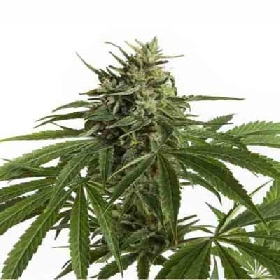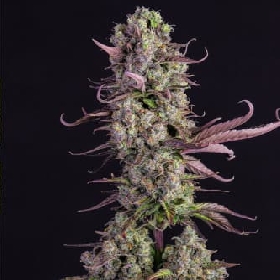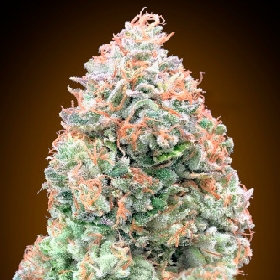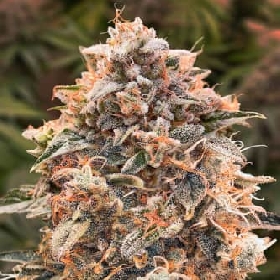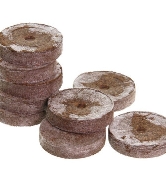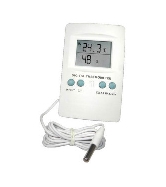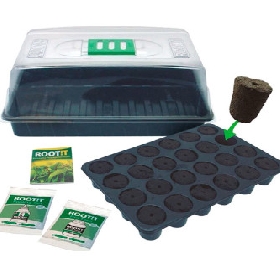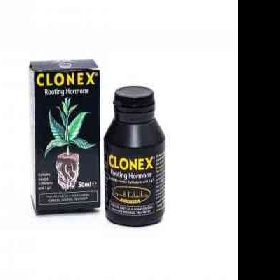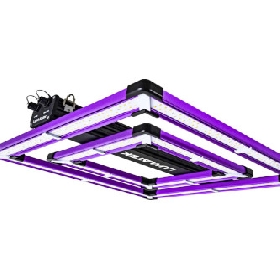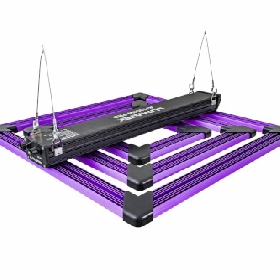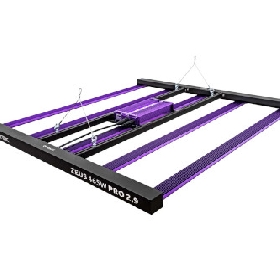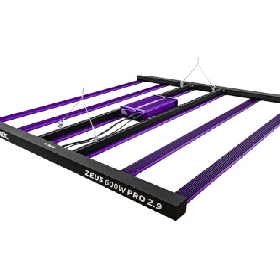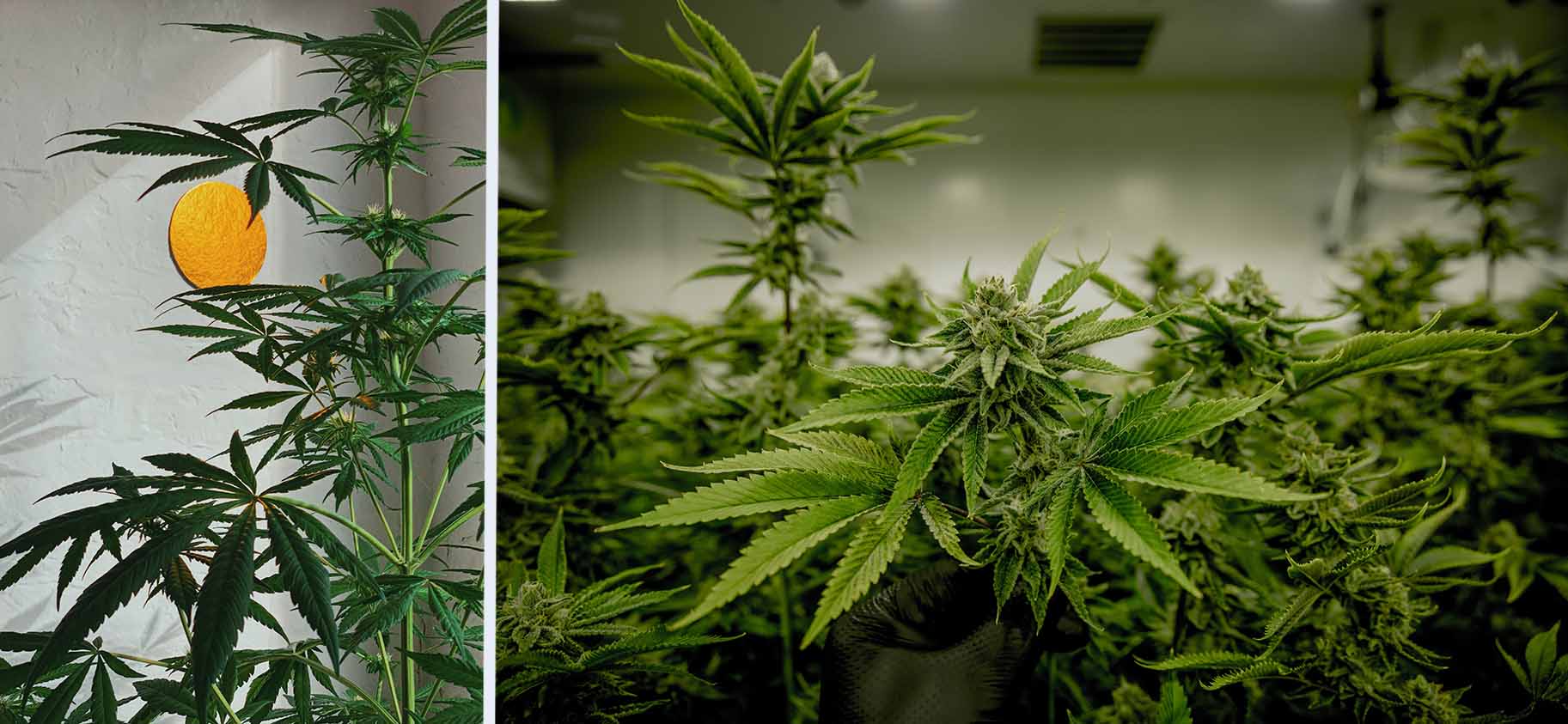
Grow indoor cannabis for beginners - a quick guide
Table of Contents
-
Growing indoor cannabis for beginners - a quick guide
- Seed choice - here already much is predetermined
- Earth, coco or hydroponics
- Germinate cannabis seeds correctly
- Growth phase
- Choosing the right fertilizer
- Let there be light - the lighting when growing cannabis makes all the difference
- Finally harvest time
- Just a little patience
What stoner doesn't dream of cannabis self-sufficiency? But how can you supply yourself with cannabis and what do you need? That's what you'll find out in this indoor grow guide. While you can also put the plants on your balcony or windowsill, you'll get better results if you use a beginner grow box kit. Even with just a few of your own plants, you can adequately supply a normal consumption - if you go about it the right way.
This guide to growing your own weed indoors tells you everything you need and what to look out for.
Besides choosing the right seeds and equipment, it's all about proper care. The plants need the right conditions to develop ideally.
This indoor growing guide is first dedicated to the right choice of seeds, substrate and germination. Then it is about finding the right lighting and fertilizer. Finally, information on the growth and flowering phases, as well as proper harvesting and drying, complete out the material.
Of course, each of these topics is so extensive in itself that there are entire books on them, but this guide touches on and summarizes the most important information that is critical to successful cultivation.The technique will naturally improve over time.
Seed selection - a lot is already predetermined here
Meanwhile, there are thousands of different varieties, which differ, for example, in taste, appearance and potency. Roughly, cannabis seeds can be divided into two categories of genetics: Indica and Sativa.
But perhaps an even more important criterion for beginners is the distinction between photoperiod and autoflowering seeds. While the former only initiate the flowering phase when the lighting phases become shorter and the dark phases longer, auto-strains do this by themselves, regardless of the lighting duration. This makes them less prone to error, making seeds with auto-genetics ideal, especially for beginners.
But besides that, there are many other traits that can be influenced by genetics. For example, whether a plant is resistant to cold, mold and parasites, and how much care and attention it requires.
Beginners should therefore pay enough attention to the right seed selection and choose as resistant as possible Auto Strains such as Auto White Widow, Auto Gorilla Zkittlez or Auto Chocolate Skunk XXL. This is more advisable in the beginning than going only by the highest (potentially possible) yield.
Soil, coco or hydroponics
There are several options for growing cannabis. The simplest and most beginner-friendly is to grow in soil. The soil usually already contains enough nutrients to get the plants through the first few weeks. If you use coconut fiber or hydroponics such as expanded clay, nutrients and fertilizer must be added right from the start. Also, soil is more forgiving of beginner mistakes than the other substrates. In any case, you should make sure to use a substrate specially designed for cannabis cultivation. You can get this in the grow store or on the Internet.
Germinate cannabis seeds correctly
There are also all sorts of different methods for germination. Ultimately, however, it depends on humidity, temperature and light. Frequently used techniques are germination in a water glass or in damp kitchen paper. While these allow you to see the result virtually live as the seeds are exposed, they are prone to damage as the freshly germinated seed has to be transplanted afterwards. Therefore, a safer way to germinate cannabis seeds is to plant the seed directly into soaked soil and let it germinate there. Alternatively, you can use germination jars or rockwool blocks. The best time to let the seeds germinate is spring, but germination is also successful apart from that, if the appropriate conditions (high humidity, moderate heat) are simulated.
Growth phase
When the first true leaf has appeared, the growth phase begins. In this stage, cannabis needs a lot of light.At least 14 hours of light per day. However, most growers prefer an 18:6 rhythm. So 18 hours of light and 6 hours of darkness. Because the more light the plants receive, the better they develop. The lighting can be easily controlled with a timer, so you will not forget to turn the lamp on and off. In addition to light, the cannabis plants need nutrients during the growth phase. These are given to the plants through fertilizer, which is usually simply added to the water that you use for watering. But you have to be careful with the dosage of the fertilizer. More is not automatically better. Too much fertilizer can also cause plants to not develop properly.
Choosing the right fertilizer
The type of fertilizer you need is mainly determined by the substrate you use. Depending on whether you are growing in soil, coco or hydroponics, there are different mixtures that perfectly complement the substrate in question. Chemical fertilizers are especially suitable for hydroponic cultivation, while organic fertilizers are recommended for organic substrate. In addition to nutrients such as calcium, magnesium, phosphorus, silicon or nitrogen, the pH value must also be correct. You can easily determine this yourself with a pH meter and then adjust it with pH-Plus or pH-Minus. For soil, the ideal pH value is 6.0-6.5 and for coconut fibre 5.5-6.0.
For beginners, the following applies when it comes to fertilizers; Limit use of fertilizers to the essentials. There are many means that promise the blue of heaven. But as already mentioned, one should beware of over fertilization. In addition to fertilizers, there are also other growth aids, such as rooting hormones.
from 13.90 EUR
incl. VAT, excl. shipping
Item currently not available.
Please let me know when the product is available again:
Let there be light - lighting makes all the difference when growing cannabis
Basically, there are three main technologies that play a role. Several factors determine which lamp you should use to produce marijuana. Metal-halide lamps and sodium vapor lamps are among the high intensity discharge lamps. They are relatively inexpensive to buy and work reliably. However, you need a ballast and later on, MHL for the growth phase and NDL for the flowering phase. The wattage depends on the number of plants or the space to be lit. In the Linda Seeds online store, there is an inexpensive 600W NDL set including ballast and reflector.
A more expensive but better alternative is to use special LED lamps. These are variable in the light they emit. Therefore, one and the same lamp can be used to accompany both the growth and flowering phases. And even if the price of purchase is higher, LEDs consume only about half as much electricity as conventional lamps. This means that the higher purchase price can also pay off financially after just a few growing cycles.. Indeed, another advantage of LED technology is that it can shine many times longer than conventional lamps, which usually have to be replaced every year. LED grow lamps in different strengths (eg 200, 300, 465 and 600 W) are available at Linda Seeds in the assortment.
Harvest time at last
At the end of the growing cycle, you need to harvest your marijuana and then dry it. When harvesting, the most important thing is to wait for the right time while not taking too much time. Usually, the packaging of the seeds indicates how long the flowering phase lasts approximately. However, you still have to determine the exact time yourself. You should harvest your cannabis when the majority of the trichomes change color from transparent to milky. The best way to see this is with a magnifying glass or a special weed microscope. If the trichomes turn yellowish or brown, you've waited too long.
Just a little patience
But before you can roll the first joint, the marijuana has to dry. To do this, you have to cut the cannabis to free the buds from the excess leaves and stems. Then the buds are hung in a dark room and left there for between one and three weeks. The temperature should be about 21 degrees and during this time the buds not only ripen in taste, they also lose bitter substances, which makes them really edible. Alternatively, you can also dry buds in a dehydrator. This is faster, but not so practical for larger quantities. The cannabis seeds should also be dried. So you have the material for the next sowing ready.
HUMIDITY INDICATOR CARD (10-60% R.H.)
from 8.90 EUR
incl. VAT, excl. shipping
Item currently not available.
Please let me know when the product is available again:
62% 67GR INTEGRA BOOST HUMIDITY PACK
from 5.90 EUR
incl. VAT, excl. shipping
Item currently not available.
Please let me know when the product is available again:
62% 8gr INTEGRA BOOST HUMIDITY PACK
from 1.30 EUR
incl. VAT, excl. shipping
Item currently not available.
Please let me know when the product is available again:
